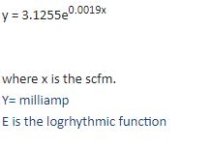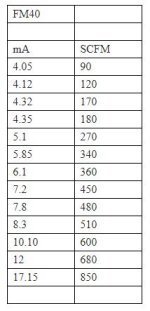dginbuffalo
Member
Hello,
I've been told that this is the way i need to calculate airflow from a DP transmitter. I am far from a math genius and trying to find out if this is even a valid equation? This is regarding air flow across an orifice plate and not the way I recall it is calculated. Any math wiz's out there? :site:

I've been told that this is the way i need to calculate airflow from a DP transmitter. I am far from a math genius and trying to find out if this is even a valid equation? This is regarding air flow across an orifice plate and not the way I recall it is calculated. Any math wiz's out there? :site:

Last edited:



